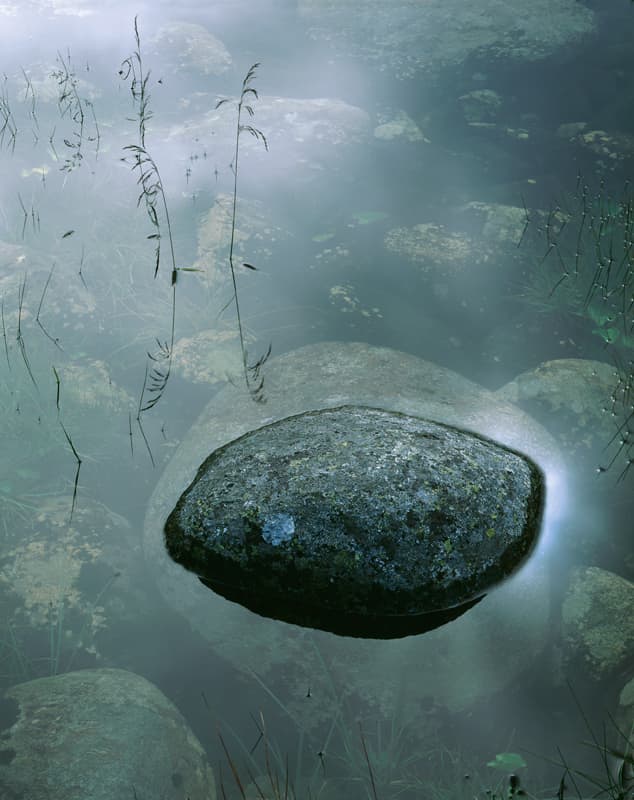Photo Insight with David Ward
 David Ward is one of the UK’s finest landscape photographers. With more than 20 years’ experience in large-format photography, he has photographed extensively throughout the UK and in countries such as Canada, Iceland, Norway and France. He has also led workshops for Light & Land. David has written two books on his photographic philosophy called Landscape Within and Landscape Beyond. Each month, he will discuss the story behind one of his fantastic landscape photographs
David Ward is one of the UK’s finest landscape photographers. With more than 20 years’ experience in large-format photography, he has photographed extensively throughout the UK and in countries such as Canada, Iceland, Norway and France. He has also led workshops for Light & Land. David has written two books on his photographic philosophy called Landscape Within and Landscape Beyond. Each month, he will discuss the story behind one of his fantastic landscape photographs
This picture was taken in Eggum, a small coastal village in northern Norway. On the day I took this image it was overcast and not ideal for taking photographs along the beach, so I headed inland to the lake instead and came across the boulder pictured here.
When I got to the lake I noticed that every once in a while the clouds thinned a little and the position of the sun through the cloud produced this ring of bright light around the boulder that you can see in the photograph. I loved the way that the sky was reflected in the water as well.
To get the halo effect on the boulder, I had to position myself in a particular spot at the right time. It took perhaps 20 minutes of standing in the one position to capture this image accurately, as the cloud was constantly moving to create different levels of light. I had to stand in that one particular spot because other positions did not produce the same halo effect.
What is very interesting about the boulder, other than the light halo, is that the distortion of the water makes the top of the boulder look much smaller than the bottom of the boulder, which creates a weird visual effect that is quite arresting to the eyes. Compositionally, though, it was not just about the boulder. I wanted to ensure that the grasses you can see towards the top left of the frame worked for the picture as a whole, and complemented the boulder. To do that, I opted to use a 200mm lens, which is the equivalent of a 70mm lens on a full-frame DSLR, on my Linhof large-format 5x4in camera to condense the perspective to produce the effect I wanted.
Shooting with a large-format camera required me to use a tripod for this image. The boulder was around 6 feet (2 metres) into the lake, so the front leg of the tripod had to be in the lake for me to get the composition I wanted. It was mid-morning light, so I think it was an exposure of only around 1/8sec.

Obviously, for the photo to work the water surface had to be as calm as possible. Unfortunately, the water was not still for the whole time I was shooting, as ripples came in fits and bursts. So while I sometimes had the lighting right, I could not get the shot because I got a ripple across the scene. This was one of the reasons the photograph took so long to take – I had to wait for the perfect combination of light and water conditions.
The image is in portrait format, but there was just open water to the right of the image, with a few more grasses and then the shore to the left. I tend to shoot maybe 85% of my images in portrait format, which as a landscape photographer may seem perverse. However, I think we train ourselves from a very young age to keep our eyes within the portrait shape as that is what we do when we read a book – the eyes bounce around within the frame. With a landscape image, I think it is easier for the eyes to wander out of the picture.
This image has a very limited palette of colours and is almost monochromatic, which is a feature I like about the photograph. One of the criticisms of shooting with Fujichrome Velvia film, as I did here, is that it saturates the colours. However, I think it works fantastically well in overcast conditions because it lifts the colours slightly and you get wonderful subtlety. Also, on large format you get fantastic tonality and a smoothness to the results. I think this still outshines anything you can do with digital imaging.
There is no post-processing involved in this image. The only thing I have done when scanning is to ensure that the scan matches the film as closely as possible, so the colours you see and the lighting are all as they were in the original photograph. This image works because you can keep coming back to it and find new things.
I try to make images that are graphically simple, but I also like a picture to have hidden complexities. As a photographer, you want to create an image that has a satisfying amount of complexity, an image that can grow on you, that you can return to and find new things each time you do. I think this image achieves that with the depths of the water behind the reflection of the sky offering you complexity.
David Ward was talking to Jon Severs
To see more of David’s images or to book a place on one of his workshops, visit www.into-the-light.com







